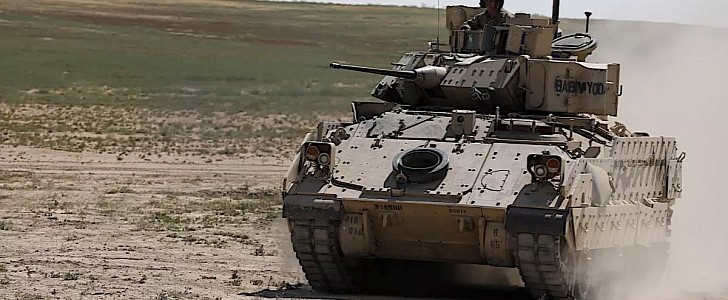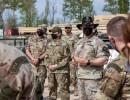Way back in 1981 (that's more than four decades ago), defense contractor BAE Systems launched into military service something called the Bradley Fighting Vehicle (BFV). We’re talking about a tracked platform for war machines that can double as anything from command and control vehicles to actual combat weapons.
This is partially the reason why America’s Army loves it so much, and had close to 7,000 of them made over the years. But no matter the amount of love the BFVs are getting, four decades is a long time, so they’re also getting old. And that requires expensive maintenance to be performed.
The company behind the Bradley, BAE Systems, should, of course, be the most qualified to perform such work, and the Army knows this. That’s why it awarded the defense contractor a five-year, $383 million contract “to perform technical and sustainment support services “for its fleet of Bradley Fighting Vehicles, and M993 Multiple Launch Rocket System carriers.”
As per BAE, the contract covers the M2 Bradley Infantry Fighting Vehicle (IFV) and M7 Bradley Fire Support Team (BFIST) variants. On the Multiple Launch Rocket System (MLRS), the list includes the Army’s tracked heavy launch platform for rockets.
“Equipping our men and women on the front lines with proven combat capabilities positions them to be unmatched in battle,” said in a statement Scott Davis, vice president of BAE Systems’ ground vehicles product line. “We are proud to continue our partnership with the U.S. Army to ensure the Bradley and M993 MLRS are prepared to support mission readiness.”
The exact work to be conducted on these platforms was not detailed, aside from the fact it’ll include on-going engineering and logistics services. We were also told these operations will be conducted at BAE facilities in San Jose, California, Sterling Heights, Michigan, Phoenix, Arizona, but also elsewhere around the world.
The company behind the Bradley, BAE Systems, should, of course, be the most qualified to perform such work, and the Army knows this. That’s why it awarded the defense contractor a five-year, $383 million contract “to perform technical and sustainment support services “for its fleet of Bradley Fighting Vehicles, and M993 Multiple Launch Rocket System carriers.”
As per BAE, the contract covers the M2 Bradley Infantry Fighting Vehicle (IFV) and M7 Bradley Fire Support Team (BFIST) variants. On the Multiple Launch Rocket System (MLRS), the list includes the Army’s tracked heavy launch platform for rockets.
“Equipping our men and women on the front lines with proven combat capabilities positions them to be unmatched in battle,” said in a statement Scott Davis, vice president of BAE Systems’ ground vehicles product line. “We are proud to continue our partnership with the U.S. Army to ensure the Bradley and M993 MLRS are prepared to support mission readiness.”
The exact work to be conducted on these platforms was not detailed, aside from the fact it’ll include on-going engineering and logistics services. We were also told these operations will be conducted at BAE facilities in San Jose, California, Sterling Heights, Michigan, Phoenix, Arizona, but also elsewhere around the world.










